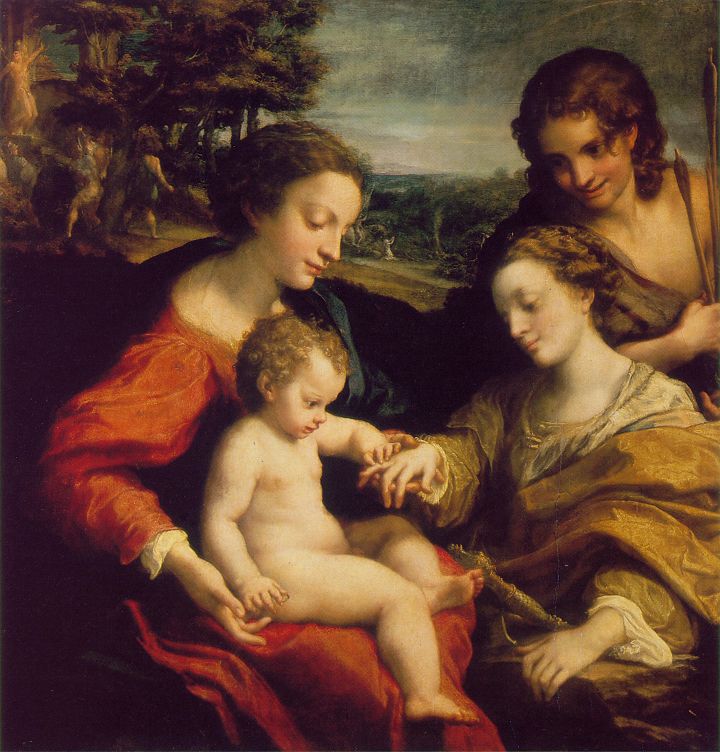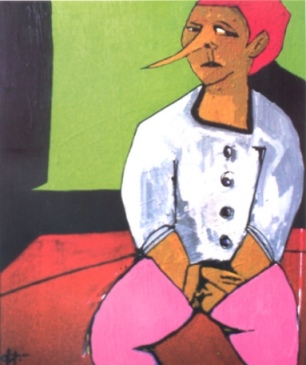Roman Holiday: A Travel Journal
by Travis Jeppesen on June 16, 2008
Roman Holiday: A Travel Journal
ARRIVAL
Thought I could keep everything intact – a towel? That won’t absorb my lust. I am holding onto you anyway. Fantasize a way of life like on TV. Wait, that’s not fantasy. Two ducks doing their mating dance outside my window, reminds me that I’m still in love with love. Not everything has been lost, it now seems. We’re inside now. Moving to a backwards beat, the sacred motion. What goes through us so casually can never truly belong. The sensation greater than that, and we’re still moving. Maybe when I finish up my travels across time. It will feel much better anyway, a live caged animal. Remembering the forest I went to as a child, and how come a spider never bit me, a rattlesnake. What I was too cruel to know was experience itself. The magnitude crept up on me. I was a teenage toy, inside myself with laughter. The symbol that threw itself at my wanking jar. The vibrancy inside her. Not all such experiences are wasted. We forget what they teach us at times, that therapeutic cryptosy that dares to unenlighten. I am a zoo for my fears. My friends number in the unbecoming.
A VISIT TO THE JOHN KEATS HOUSE
Lift not the painted veil which those who live
Call Life: though unreal shapes be pictured there,
And it but mimic all we would believe
With colours idly spread, — behind, lurk Fear
And Hope, twin Destinies; who ever weave
Their shadows, o’er the chasm, sightless and drear.
I knew one who had lifted it – he sought,
For his lost heart was tender, things to love,
But found them not, alas! nor was there aught
The world contains, the which he could approve.
Through the unheeding many he did move,
A splendour among shadows, a bright blot
Upon this gloomy scene, a Spirit that strove
For truth, and like the Preacher found it not.
– Percy Bysshe Shelley
ACCOMMODATION
Impressions of Italy. What I will start with, upon my arrival, we were invited to the flat of the neighbor of the guy we were to rent our flat from. He offered us beer, then a glass of Sicilian red. What I noticed in his living room was paintings paintings – mainly small paintings – paintings covering every surface of wall. When I went to the Vatican Museums for the first time, I understood why. The Romans go for that sort of excess. They enjoy watching it mount. When you go into the Pinakotheka, the pictures begin small, then the canvases grow larger as you go along.
I forgot how boring it was, to be an American. Not that you’re ever totally detached. Just wander into the touristy part of town, hear their voices. Don’t talk until it’s all over.
Narrow it down, fucker. You’re dissatisfied, seeing it cloying its way past you. Once you will be destroyed, then lash out, start making ridiculous threats against the world. Unrestrained, you will break apart in the face of all reason. The priests and nuns afraid to masturbate incur god’s wrath. Spiderfucked by orgy fantasies and back alley abortions that grow up to grow hairs.
When I go outside, out on to the balcony, nightchills bite my breath, my willis stands on end. Could I be everything I am denying? Congratulations! You make this into a swell date. It won’t be swollen, the times you are following.
CORREGGIO AT VILLA BORGHESE
God pissing on a larger stone apparatus. The Virgin and her baby getting educated.
GIORGIO DE CHIRICO AT MUSEO CARLO BILOTTI
This billionaire died and left his art collection to the city of Rome. So then why does the public have to pay money to see it? Well, I guess he wasn’t that generous.
Most of the museum was closed off the day we went to see it. In fact, the only thing we really got to see was his collection of de Chiricos. Combined with the smaller collection of works at the National Museum of Modern Art, you get a good survey of the painter’s devolution from metaphysical visionary to purveyor of kitsch classicism. A black and white painting at Bilotti, Archeologi Misteriosi – Manichini – Il giorno e la notte (1926), gives us the painter at his finest, fusing the human body with cities ancient and modern.
AESTHETIC OBSERVATIONS
Sugar in my clothes, call the police and get me out of here. I have married a second savior for sure. Are you willing to get the hell out of the ass of my looseness? No memento is moving. If only I could satisfy the toss of dreams, catch myself out at the superiority I once feigned to enjoy. Before I fell apart, my hands were truly made of leather. I shared your faith with my armpit; a belch in the kitchen carries me away. You are my darling, you are my ashtray. You are spreading baby rumors around the neighborhood. I never had a baby on your face, I am sorry. Are you a woman or a suntan? A minute consideration of causality. Seagull’s presence too far inland, reminds me of my own species. Then I was a survivor. Set me up for going broke – everything that is to be achieved here is now crying. Superb priest’s ornamentation rots out the gaybar. It smells like feet everywhere I go.
=
Woke up this morning with a brain in my mouth. Didn’t know what I was doing; called Laura. Invigorated with precision, started to do some math. Tampered out at arithmetic’s deluge. Wish I was sweet; wish I could produce my own tempo. The dream always works diagonally. Shepherd comes in the picture to drown out the sheep’s opposition.
A STROLL DOWN VIA MARGUTTA
Around the corner from the Spanish Steps, Via Margutta has traditionally been the Roman street for artists. Fellini lived here until his death, and the street is still filled with galleries. I was surprised by the high quality of work I saw. Unlike the comparable Auguststrasse stretch in Berlin, where you have to wade through a lot of murkiness in order to recover the gems, Rome seems intent on proving to the world that great art isn’t merely a thing of the past.
The youngest artist I saw, Giuseppe Tesoriere, was born in 1981. He already has a unique style developed, which works for me, although it clearly won’t be to everyone’s liking. An eccentric colorist, Tesoriere offers acrylic paintings of distorted human figures rendered in sharp lines and pointy angles in his exhibition at Monogramma. The paintings are cartoonish, yet also quite sophisticated.
One day, the history of Abstract Expressionism will have to be re-written in order to include a slew of Italian artists who, seemingly unbeknownst to their American counterparts, made an energetic and lasting contribution to the 20th century’s most important painting movement. Chief among these was Emilio Vedova, subject of a retrospective at Campaiola. Most of the paintings are on medium-sized canvases – usually around 80 x 60 cm – and contain large brushstrokes. In some cases, such as the wound-like (red/purple/black) untitled painting from 1968, scratches are made in the paint using a stick-like instrument, etching artificial avenues in the chaos of the artist’s anti-world. In an untitled from 1960, thick black brushstrokes evoke the work of Franz Kline, while slighter vertical slithers seem to emerge stark-like as figures, calling to mind the drawings in Cy Twombly’s North African notebooks – particularly in the contrast of the black dashes on gold background.
The quality that I admire about Vedova – and Italian painters, in general, stretching back throughout the centuries – is that size is never confused with scale. That means that you can have a monumental picture that is actually physically small. Viewing several of Caravaggio’s paintings for the first time at Villa Borghese, I was surprised at how relatively small the canvas was compared to the image I had in my mind based on viewing reproductions. This does not detract from the overall painting – if anything, it fosters greater concentration on the image itself, rather than overwhelming us. Countless American artists could learn a lot in Rome, namely, those responsible for all of the bad art produced in recent years under the “bigger is better” banner.
To draw out some further comparisons: Where Berliners value coolness, Romans favor eccentricity. This is why the works of a painter like Odd Nerdrum, currently on at First Gallery, look so amazingly good in Rome, whereas in Berlin, they would likely be met with snarls of derision. Nerdrum has made a career of steadfastly following the tradition of Rembrandt and seemingly ignoring everything Modern. I say “seemingly,” because the Modernists relied on the past in “making it new,” and in this respect, Nerdrum is more modern than the Modern. The surfaces of his paintings of floating figures gleam; it looks as though the paint is still wet. A work like Burning is endemic of Nerdrum’s latest concerns; a single nude figure floats face down in an earthy sea. A new form of classical beauty, almost unbearable, and very Odd indeed. (On a sidenote, curator Marco Di Capua’s “Dark Limbo” is the best in the fledgling Catalog Essay pseudo-genre I can remember reading. Fuck theory – let’s have more poetry!)
ON THE GAY BEACH
I got sunburned.
THE CHURCH OF DIEGO TOLOMELLI
Of all the churches I visited in Rome, this one was undoubtedly my favorite. Diego Tolomelli is the only artist in the world making homoerotic stained glass. I was fortunate enough to be invited to his studio while he was in the process of completing a Saint Sebastian. Tolomelli’s style is decidedly mod prim; notice the thick black lines in his Sebastian below, the sexy tattoos. With the recent revival of interest in the Gothic across all fields of cultural activity, I think it’s only a matter of time before Tolomelli takes over the world.
ANCIENT VS. MODERN
When does tradition upend itself? Is finality’s refuge a used car lot? Can’t I figure out what I’m pretending to be when I have a self and little else? I fucking struggle to get it all out, then I’m dead and I can’t write no more. Imagistic shadow. Horizon’s grapefruit. Over the end and then I’m free. Muscular endgame triumphant. We are there and then – both simultaneously and at once. Times alone lead to artificial superiority standards. The layman’s duck cloud and what species means, drown the names.
To be, in rapid felicity, a white light fading. Animal mother comes out of the woodwork to feed a cloud. We were within the days, within the storm. Trying to get it mottled down into forthrightness. What can’t be controlled can at least be fostered. Is it too much to birth the moon? Sure, I scare myself sometimes. Too much gravity is a terrible thing to be forced to confront. I am a satellite on top of the moon. Sad wonder is all the same then – we are drugless anchovies wanting. I am writing for the, into the future. I am writing the future.






Leave your comment